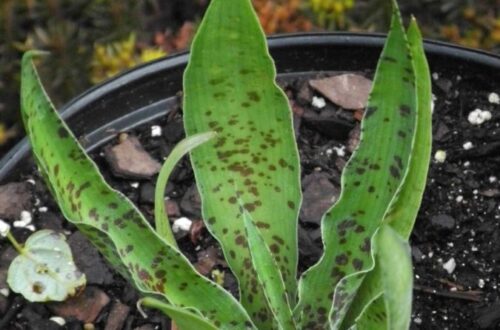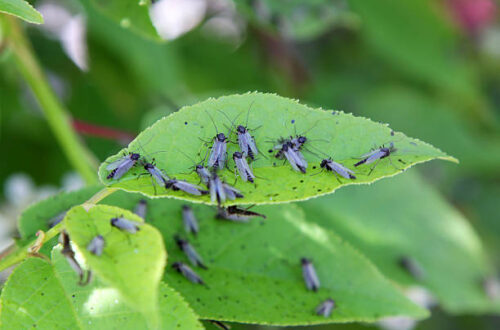
How to Care for Succulents Indoors
Have you ever admired the beauty and resilience of succulents and thought about bringing these captivating plants into your home? Succulents are perfect for indoor gardening due to their unique ability to store water in their leaves, making them low-maintenance and ideal for various indoor environments. However, to keep them thriving, you need to understand their specific care needs. From lighting and watering to soil and temperature, each aspect plays a crucial role in maintaining healthy, vibrant succulents. Read on for essential tips to ensure your indoor succulents flourish and continue to add charm to your living space.
1. Optimal Lighting Conditions
Succulents thrive in bright, indirect light, which mimics their natural desert habitat. When choosing a spot for your succulents, aim for a location that receives ample natural light, such as a south- or west-facing window. If natural light is limited, consider using grow lights to supplement their light requirements. Position the grow lights about 6 to 12 inches above the plants and use them for 12 to 14 hours a day to provide the necessary light intensity. Succulents generally need around 6 hours of bright light daily, so monitor your plants to ensure they’re not becoming leggy or stretched, which indicates insufficient light. Avoid placing them in direct sunlight for extended periods, as this can lead to sunburn and leaf damage.

2. Proper Watering Techniques
One of the most crucial aspects of succulent care is mastering the art of watering. Succulents are adapted to survive in arid conditions and prefer to dry out completely between waterings. To water your indoor succulents properly, use a watering can with a narrow spout to direct water to the base of the plant, avoiding the leaves. Water thoroughly until you see water draining out of the bottom of the pot, then let the soil dry completely before watering again. Overwatering is a common issue and can lead to root rot, so it’s better to err on the side of caution. During the winter months, succulents enter a dormant phase and require less frequent watering. Always check the soil moisture level before adding more water.

3. Choosing the Right Soil
Succulent soil is specially formulated to provide the drainage and aeration that succulents need. Unlike regular potting soil, which retains too much moisture, succulent soil mixes are designed to dry out quickly and prevent waterlogged conditions. You can purchase pre-mixed succulent or cactus soil from garden centers or create your own blend by mixing equal parts of potting soil, perlite, and coarse sand. This combination ensures that the soil remains well-draining and prevents root rot. Avoid using garden soil or heavy, clay-based soils, as they can retain too much moisture and lead to poor plant health. Repot your succulents every 1-2 years to refresh the soil and provide additional space for growth.

4. Ideal Temperature and Humidity
Succulents generally prefer a stable temperature range that mimics their native desert environment. Indoor succulents thrive in temperatures between 60°F and 80°F (15°C to 27°C). Avoid placing them near drafts, heaters, or air conditioners, as sudden temperature fluctuations can stress the plants. During the winter months, succulents can tolerate slightly cooler temperatures but should be kept above freezing. Humidity levels in most indoor environments are typically low, which suits succulents well. However, if you live in a particularly dry climate, consider using a humidity tray or placing a shallow dish of water near your plants to maintain some moisture in the air. Ensure that the soil remains dry to the touch before watering again.

5. Fertilizing Succulents
Succulents generally need less fertilizer compared to other plants. They are adapted to thrive in low-nutrient environments and can benefit from occasional feeding. Use a balanced, water-soluble fertilizer specifically formulated for cacti and succulents. Fertilize your indoor succulents once a month during the growing season (spring and summer) to provide essential nutrients for healthy growth. Dilute the fertilizer to half the recommended strength to avoid over-fertilization, which can lead to salt buildup and potential damage. In the winter, succulents typically enter a dormant phase and require little to no fertilization. Be cautious not to fertilize during this period, as it can disrupt their natural rest cycle.

6. Pest and Disease Management
Indoor succulents can occasionally encounter pests and diseases that may affect their health. Common pests include mealybugs, spider mites, and aphids. To manage these pests, regularly inspect your plants for signs of infestation and use insecticidal soap or neem oil to treat affected areas. For mealybugs, which are often found in the leaf joints and crevices, gently remove them with a cotton swab dipped in alcohol. Additionally, ensure that your succulents have good air circulation to reduce the risk of fungal diseases. If you notice any signs of mold or rot, remove the affected parts promptly and improve the plant’s environmental conditions to prevent further issues.

7. Pruning and Propagation
Pruning is an important part of succulent care, helping to maintain the shape and health of your plants. Remove any dead or damaged leaves using clean, sharp scissors or pruners. This will not only keep your succulents looking tidy but also prevent the spread of potential diseases. Pruning can also stimulate new growth and encourage the plant to become fuller and more compact. Succulents are also easy to propagate, allowing you to grow new plants from leaf or stem cuttings. To propagate, take a healthy leaf or stem cutting, let it dry and callous over for a few days, then place it in well-draining soil. Water sparingly until new roots develop.

8. Container Considerations
Choosing the right container for your succulents is crucial for their overall health. Opt for pots with drainage holes to prevent water from accumulating at the bottom, which can lead to root rot. Containers made from materials like terra cotta, ceramic, or plastic can all be suitable, as long as they have adequate drainage. Terra cotta pots are particularly beneficial because they are porous and allow excess moisture to evaporate. When selecting a pot, choose one that is slightly larger than the root ball of your succulent to allow for growth without causing overcrowding. If you prefer decorative containers without drainage holes, use them as cachepots and place your succulent in a plastic nursery pot inside.

9. Seasonal Adjustments
Indoor succulent care may require some adjustments with the changing seasons. During the summer, ensure your succulents receive plenty of bright, indirect light and increase watering frequency as the plants grow more actively. In the winter, reduce watering and allow the soil to dry out more between waterings as the plants enter their dormant phase. Additionally, adjust the placement of your succulents to avoid drafts and cold spots that may affect their health. Keep an eye on the humidity levels and use a humidity tray if necessary to maintain a stable environment. Seasonal adjustments will help your succulents adapt to changing conditions and continue to thrive.

10. Common Challenges and Solutions
Caring for succulents indoors can present some challenges, but with the right knowledge and tools, you can overcome them. Common issues include leggy growth, leaf drop, and discoloration. Leggy growth often results from insufficient light and can be corrected by moving your succulent to a brighter location or using grow lights. Leaf drop may occur due to overwatering or sudden temperature changes; ensure proper watering practices and stable temperatures. Discoloration can indicate various issues, such as sunburn or nutrient deficiencies; adjust light exposure and consider using a diluted fertilizer to address these problems. Regular monitoring and prompt action can help maintain the health and beauty of your indoor succulents.

By understanding and addressing the specific needs of your indoor succulents, you can create a thriving environment that enhances their natural beauty and resilience. From providing optimal lighting and watering to choosing the right soil and containers, each aspect of succulent care contributes to their overall health and longevity. With these detailed tips and techniques, you’ll be well-equipped to nurture your indoor succulents and enjoy their unique charm throughout the year.



